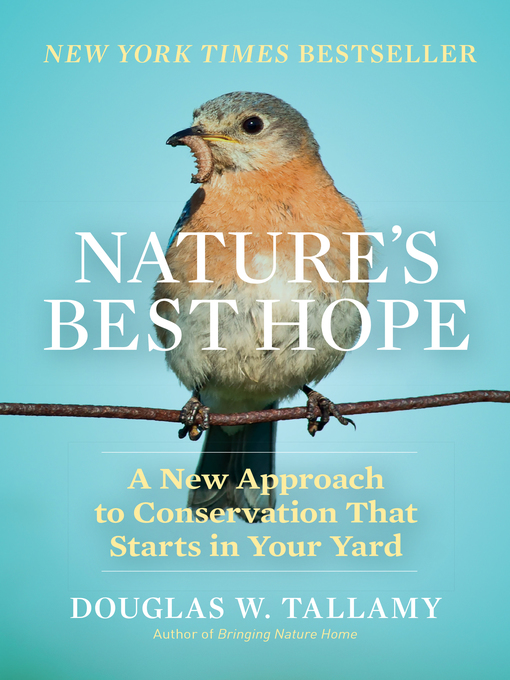
Nature's Best Hope
A New Approach to Conservation That Starts in Your Yard
- اطلاعات
- نقد و بررسی
- دیدگاه کاربران
نقد و بررسی

Starred review from March 1, 2020
Readers of Tallamy's Bringing Nature Home and The Living Landscape (with Rick Darke) will recognize some familiar themes in his most recent offering: How important native plants are to our ecosystems, how our landscaping practices should be more friendly to both wildlife and humans, and how the "renaturing" of our backyards en masse could create a giant wildlife corridor the author calls "Homegrown National Park." Tallamy (entomology, Univ. of Delaware) accentuates practicality and "fixing problems"--such as biodiversity loss, habitat fragmentation, and climate change, and is candid about the obstacles ahead. His plan relies on individual effort, yet, as he acknowledges, millions of people remain "clueless" about nature. Thus he provides some answers in a down-to-earth, personalized style; the use of his own backyard as demonstration lab--"Tallamyland"--and an emphasis on small steps to local ecosystem recovery (removing alien plants, shrinking the lawn, fostering insects, planting oaks and other "keystone" genera). The book's solid organization (including FAQs at the rear) and striking photography also aid his cause. VERDICT Recent reports of massive declines in bird populations across North America make this book both timely and apposite. An essential addition to most gardening collections.--Robert Eagan, Windsor P.L., Ont.
Copyright 2020 Library Journal, LLC Used with permission.

Starred review from February 1, 2020
A professor in the department of entomology and wildlife ecology at the University of Delaware, Tallamy makes the case for developing a 20-million-acre Homegrown National Park?an area larger than the combined acreage of the Everglades, Yellowstone, Yosemite, Grand Teton, Canyonlands, Mount Rainier, North Cascades, Badlands, Olympic, Sequoia, Grand Canyon, Denali, and Great Smoky Mountains National Parks. Such a park could be created if all landowners in America converted just half of their lawns to productive native-plant communities. Tallamy buttresses this fantastical idea with a science-supported, often-gobsmacking explanation of the interconnections between native plants, insects, geography, and the humans and other animals whose lives depend on their high-functioning interplay. The challenge, he says, is to convince people that, for their own good, they need to value something they do not currently value. For example, understanding the difference in environmental value between introduced and native species, the latter providing as much as 75 percent more of the caterpillar biomass that's critical to bird populations. Or appreciating the value of keystone plants, oak trees among them, which provide disproportionate support to a local ecosystem and whose loss could be catastrophic. A revelatory guide whose application can begin just outside our doors.(Reprinted with permission of Booklist, copyright 2020, American Library Association.)




دیدگاه کاربران